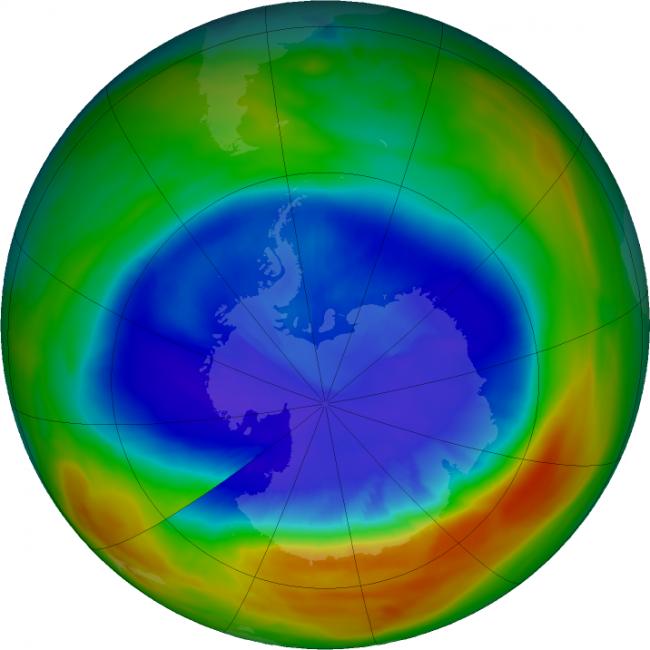
Antarctic Ozone hole is healing, confirms IIT KGP study
Kharagpur, Nov 29 (IBNS): While the world is debating on climate change and global warming, researchers at IIT Kharagpur have given the environmental evangelists a reason to rejoice. A research team from the Center of Oceans, Rivers, Atmosphere and Land Science (CORAL) at IIT Kharagpur have come up with new data confirming that the Antarctic Ozone Hole is on a healing path.
The researchers have collected data from 1979 to 2017, which shows though there was a loss in saturation of Ozone since 1987 over the Antarctic; the saturation of loss at 12-21 km has significantly reduced over the period 2001–2017.
This is the first of its kind research providing detailed long-term (four decades) analysis of Antarctic ozone loss saturation in terms of its first occurrence, timing, spatial differences, vertical spread, inter-annual changes and temporal evolution using high-resolution ozonesondes and satellite measurements inside the vortex for the said period.
“We have observed over the past four decades the Ozone layer depletion peaked during winters each year except the warm winters of 1988 and 2002. However, our analysis shows a clear reduction in the frequency of occurrence of ozone loss saturation over the period 2001–2017 consistently throughout various datasets. This reveals the emergence of an important milestone in ozone recovery,” confirmed Prof. Jayanarayanan Kuttippurath from IIT KGP who along with Pankaj Kumar, Prijitha J. Nair and P. C. Pandey from the IIT KGP CORAL team conducted the study which has recently been reported in the prestigious journal npj Climate and Atmospheric Science published by Nature.
Data were collected for various altitudes from Autumn to Spring, over the decades, for stations across Antarctica, including measurements from the Indian station Maitri. The reduction of ozone loss saturation in the recent years ranged from 20% to 60% across the data spread.
Is this going to affect the existing protocols and regulations for industrial emissions of ozone depleting substances? Prof. J. Kuttippurath believes that the recovery indicated in the loss saturation layer, robustly suggests that the Montreal Protocol has definitely saved the ozone layer and climate of the southern hemisphere. Since there are already significant changes in the southern hemispheric climate owing to the Antarctic ozone loss, the recovery from loss saturation is very likely to affect that.
The ozone recovery process is very slow and it will take a few decades to get back to the pre-ozone hole levels. However, the emergence of ozone recovery is very clear even at the altitudes where the near-complete ozone loss occurs”, adds Prof. P. C. Pandey of CORAL, who is also the founder director of the National Centre for Antarctic and Ocean Research.
Support Our Journalism
We cannot do without you.. your contribution supports unbiased journalism
IBNS is not driven by any ism- not wokeism, not racism, not skewed secularism, not hyper right-wing or left liberal ideals, nor by any hardline religious beliefs or hyper nationalism. We want to serve you good old objective news, as they are. We do not judge or preach. We let people decide for themselves. We only try to present factual and well-sourced news.







